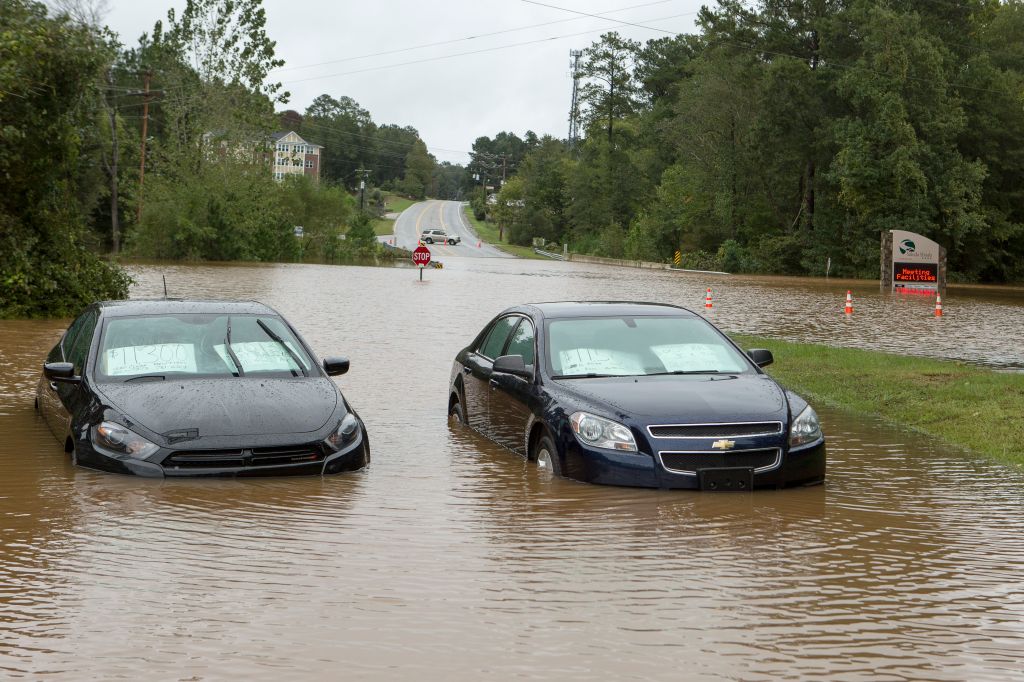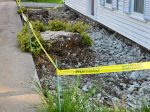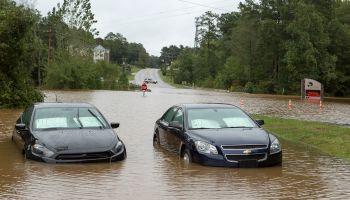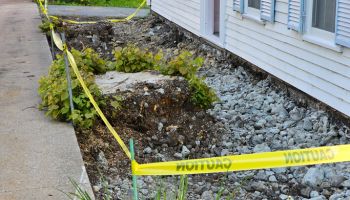Record rainfall in northern Fort Bend County and the watersheds of many rivers, creeks, and streams spelled trouble once again for Fort Bend County residents last month, many for the second time in less than a year. Many survivors of this year’s floods are still recovering from last year, whether financially or emotionally.
“We saw flooding from creeks and ditches this year that we didn’t even see last year,” states county Judge Robert Hebert, “for many residents, trusted ‘neighbors’ like Bessie’s Creek were suddenly in their yards or even in their homes.” Bessie’s Creek was not alone in the havoc wreaked on residents, as the Barker Reservoir hit record pool elevations and held there for weeks following the torrential rainfall. Barker’s tributaries, namely the Buffalo Bayou, backed up into neighborhoods south of Katy, submerging streets and homes and leaving Westheimer Parkway (pictured above) flooded to this day.
For all residents in the county that were affected by the recent flooding, significant outside help has arrived: The Federal Emergency Management Administration announced on Monday that individual assistance is now available to residents affected by the recent flooding. Almost sixty damage reports filed on the Fort Bend County Office of Emergency Management website, along with several rounds of physical damage assessment conducted by county, state, and federal staff, allowed the Office of Emergency Management to send a compiled damage estimate to the State of Texas to unlock this additional assistance.
DisasterAssistance.gov – Access to Disaster Help and ResourcesFort Bend County residents, regardless of if they have filed a damage report on the county’s website or not, should now visit http://www.disasterassistance.gov/ and file a claim with FEMA.
Disaster assistance for homeowners and renters may include grants to help pay for rent, temporary housing and home repairs, as well as other serious disaster-related needs, such as medical and dental expenses or funeral and burial costs.
Low-interest disaster loans from the U.S. Small Business Administration (SBA) also are available. SBA helps businesses of all sizes, private non-profit organizations, homeowners and renters fund repairs or rebuilding efforts and cover the cost of replacing lost or disaster-damaged personal property. These disaster loans cover losses not fully compensated by insurance or other recoveries and do not duplicate benefits of other agencies or organizations.
Texans who had storm damage should register with FEMA even if they have insurance. FEMA cannot duplicate insurance payments, but under-insured applicants may receive help after their insurance claims have been settled.
Residents and business owners should apply right away with SBA as part of the overall federal disaster recovery process, and not wait for insurance claims to settle.
People can apply for FEMA assistance online at http://www.DisasterAssistance.gov or via smartphone or web-enabled device at m.fema.gov. Applicants may also call 800-621-3362 or (TTY) 800-462-7585 from 6 a.m. to 9 p.m. (CT). Multilingual operators are available
FEMA inspectors begin making appointments and visiting damaged areas as soon as people register for FEMA assistance in a declared county; the 161 registrations already in Fort Bend County will likely hear from FEMA very soon.
“The critical work is ongoing: to plan, prepare for, respond to, and mitigate against disasters of all types, including flooding,” adds Jeff Braun, Emergency Management Coordinator for the county, “we have not stopped responding to this incident, and anticipate recovery taking some time. We are working alongside our residents at this time to ensure speedy and thorough recovery.” The Office of Emergency Management in Fort Bend County is staffed by a dozen dedicated employees who spend their time ensuring that the county is prepared for any emergency, and capable of responding at a moment’s notice.
There is still much work ahead for the Fort Bend County Office of Emergency Management; the Office is still working diligently to ensure that anyone who lives, works, or plays in Fort Bend County is made whole from the recent disaster and is as safe as possible from future disasters. Lessons learned about this incident, like all before it, are being institutionalized into plans and procedures to ensure that the next time the county responds it will be faster, more efficient, and more thorough than before.
Any residents with questions or concerns about the disaster assistance process can call the Office of Emergency Management at (281) 342-6185 or visit http://fbcoem.org/
Fort Bend County is located in the Texas Southeast, immediately South and West of Harris County and the city of Houston. It is the home of over 600,000 people and is one of the fastest growing counties in the United States. For more information about Fort Bend County, visit the county homepage at http://www.fortbendcountytx.gov.

















